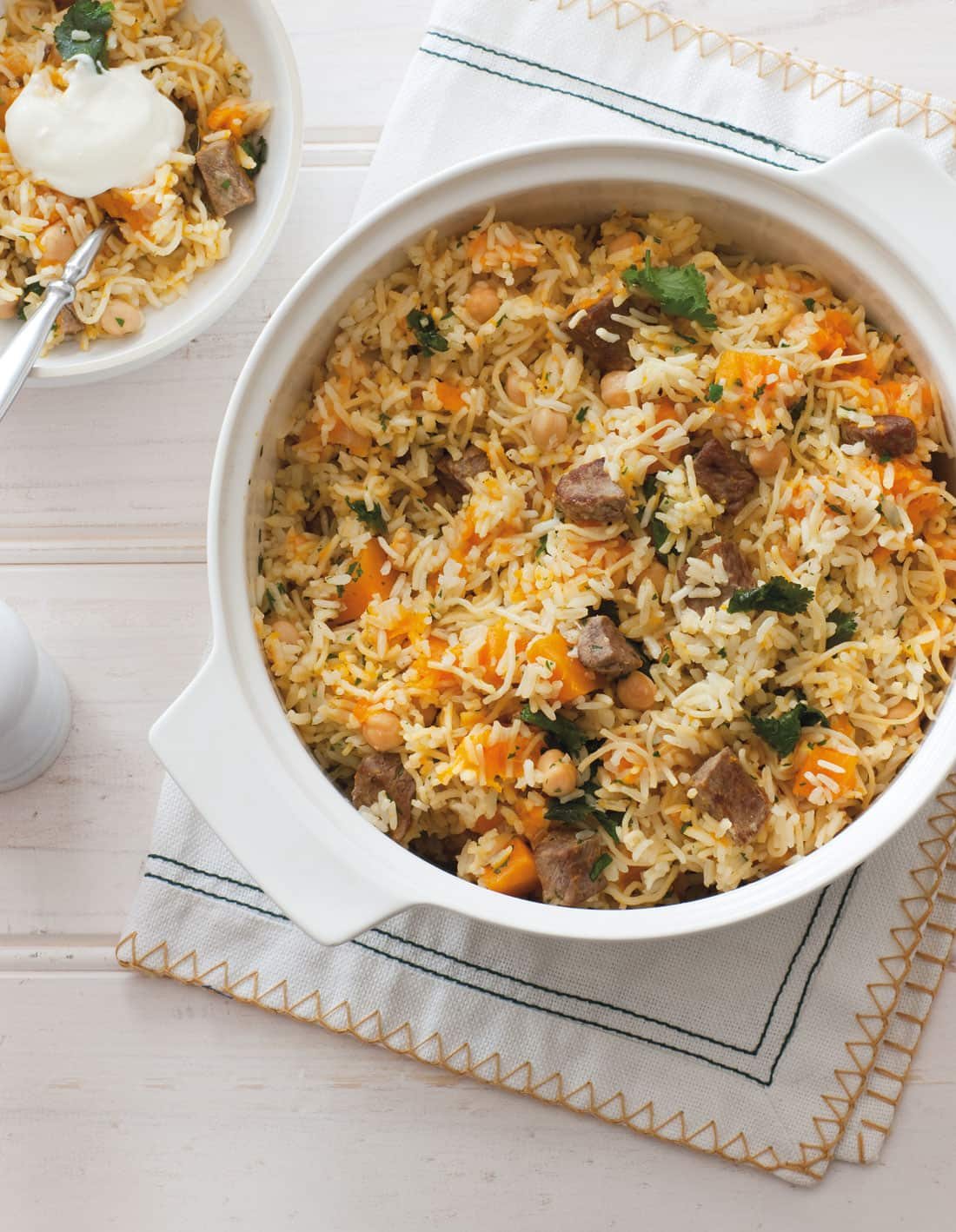Rice lovers of Australia might soon have all their nutritional and taste dreams come true, combined in one little super-charged wonder grain.
Australian scientists believe that in under a decade, shoppers might be able to access a special rice variety blending the micronutrient content of brown rice and taste of white rice into one grain to enjoy beside our favourite foods.
Researchers from Charles Sturt University and the NSW Department of Primary Industries (DPI) today released the results of a study into processing conditions that boost the nutritional value of some white rice. Improvements in rice processing are vitally important in the fight against nutrient deficiency in some areas of the world. The other tactic in that battle is fine-tuning rice species to concentrate more iron and other minerals in the core of the grain, so less is lost when the outer bran layer is removed during milling to create white rice. Rice makes for a hearty dinner in this lamb and pumpkin pilaf.
Rice makes for a hearty dinner in this lamb and pumpkin pilaf.

Source: SBS Food
Rice chemist at the NSW DPI, Dr Laura Pallas, explains that the new ‘wonder rice’ would ideally be high in iron and zinc but maintain a delicious soft texture that consumers demand from white rice and bread.
“People like white fluffy texturous rice,” says Dr Pallas. “But parboiling rice tends to harden the texture so we want to work towards developing that holy grain that has an improved texture of cooked rice.
“So a new type of rice would have the health benefits of brown and coloured rices, and the flavour and texture of a white rice.”
Dr Pallas estimates that the super rice grain could make its way onto our supermarket shelves within around 10 years, although progress depends on market demand. “Australia already has world-class quality rice so if we were able to do this, other than the fact that it would be spectacular, it would be a first.
“And I don’t see why we can’t do it to be honest: it’s all very doable.”
The research out today from Charles Sturt University (CSU) and the DPI has taken the world one step closer to realising this. The study, published in the LWT – Food Science and Technology journal, reveals the best way to retain nutrients such as iron, manganese, potassium and zinc during processing. It was already well known that parboiling grains before milling helps retain essential micronutrients; this research looked more closely at what happens using different methods.
The study found that soaking rice grains in salted water at 90˚C and then steaming the grains was the most effective method of processing for retaining nutritional value by encouraging the migration of nutrients from the outer rice bran layer (stripped during milling) into the core.
“This finding has opened a door of opportunity for us to engineer the nutritional quality of rice,” says Prakash Oli, NSW DPI researcher and the lead author of the paper.
“We are currently working to fine-tune rice species to express more iron and other important nutritional minerals in the grain core during growth and soaking.” (The researchers are working on non-GMO rice options.)
Millions of people around the world who consume rice, especially those in developing countries, could benefit from improved rice production and processing methods, especially in regard to iron. More than two billion people, or 30 per cent of the world's population, suffer from iron deficiency with symptoms ranging from poor mental development in children to depressed immune function and anaemia.
Dr Pallas adds that these new research findings help to create a clear path towards the creation of better grains.
“We can implement this treatment of Australian rice, fortifying it with iron, soon if the demand is there,” says Dr Pallas. “If we wanted to say ‘yes let’s go’, we could do achieve this with the right production equipment in a year. But it all depends on the market and on demand.”
In the meantime, the scientists are currently working to create a white rice variety that has an even lower glycaemic index (GI) than any product currently available.
“Diabetes is a worldwide epidemic happening,” she says. “So our main focus at the moment is developing this low-GI rice: a new variety that will be at least a few points lower than all other rice.”
Share
SBS Food is a 24/7 foodie channel for all Australians, with a focus on simple, authentic and everyday food inspiration from cultures everywhere. NSW stream only. Read more about SBS Food





